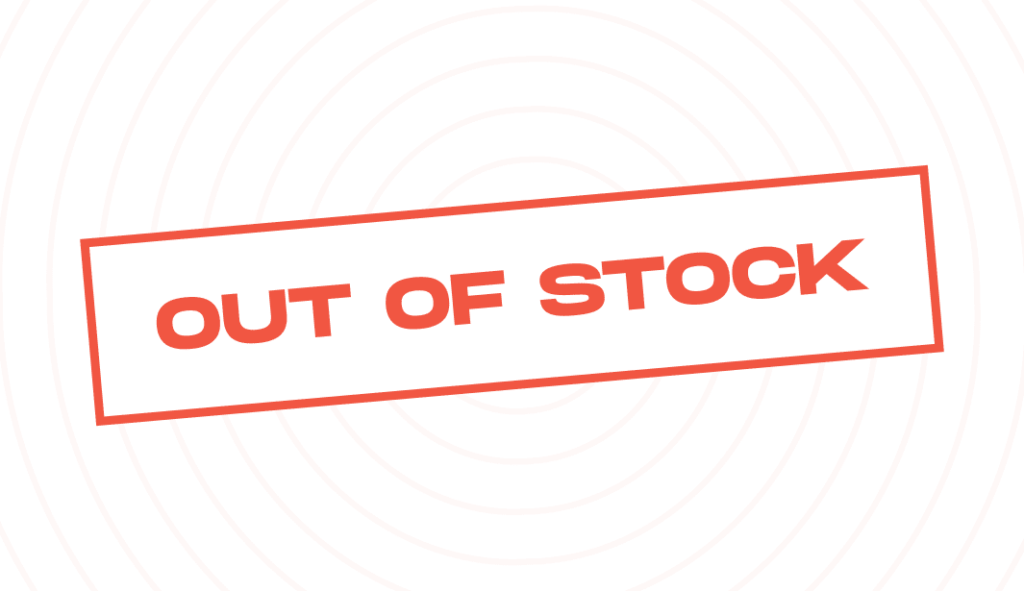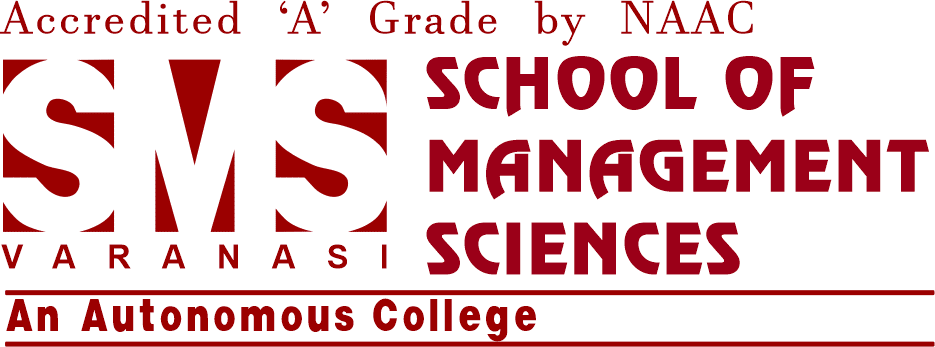
Imagine you go to a shop to buy something as simple as a Pond’s cream. But the shop doesn’t have it and the shopkeeper tells you that it will be restocked ‘sometime soon’. Wouldn’t this put you off? And if it happens three or four times, you will probably start going to another shop where everything you need remains available at all times!
On the other hand, there’s a shop which has too many unsold products sitting on its shelf for a long time. When you go there to buy a packet of chips, you notice it’s dusty and is almost going to expire. You probably wouldn’t want to buy it. For the shop, the costs of storing these products pile up.
These are some of the nightmares that haunt businesses that fail to master inventory management.
Inventory management is the meticulous dance of ensuring you have enough stock to meet customer demand without overstocking. It’s a crucial element of business success, as it directly affects profitability and customer satisfaction. Get it wrong, and you face the twin perils of stockouts and excess inventory.
Stockouts aren’t just a missed opportunity. They breed frustrated customers, who may never return, damaging your reputation. On the flip side, excess inventory gobbles up storage space, ties up valuable capital, and risks becoming obsolete – a direct hit to your bottom line.
As future business leaders and managers, BBA and MBA students must grasp this delicate equilibrium. Mastering inventory management models and understanding real-life inventory control case studies will empower you to make informed decisions. Striking the perfect balance is vital to ensure smooth operations, satisfied customers, and a healthy, thriving business.
Key Concepts of Inventory Management
Demand Forecasting: The Crystal Ball of Business

Every business wants to know how much of something customers will crave in the coming month or quarter! And demand forecasting techniques do just that.
Demand forecasting techniques include historical data analysis (looking at past sales), moving averages (smoothing out fluctuations), and time-series analysis (picking up seasonal patterns), They can help you plan inventory levels.
Remember, accurate forecasts are crucial – they form the foundation of your inventory decisions.
Here’s an example:
‘Spice & Chutney’ restaurant sold 100 burgers daily this month. It predicts a 20% increase for the summer rush. It means that it will need an inventory of 120 burger patties next month.
Reorder Points: Your Stockout Shield
Think of reorder points as your inventory safety net. It’s the magic number – the stock level at which you need to replenish your supply to avoid those dreaded “out of stock” signs.
Calculating them involves factors like lead time (how long it takes for new stock to arrive) and average demand. Getting reorder points right saves you from missed sales and grumpy customers.
Here’s an example:
A bakery called ‘Devil’s Delight’ sets a reorder point of 50 cupcakes. Once inventory dips below 50, they trigger a new order to ensure they don’t run out before the next shipment arrives.
Safety Stock: Insurance Against the Unexpected
Life can get very unpredictable and so do businesses. Customers might suddenly want more, or a delivery could be delayed. That’s where safety stock comes in! It’s your buffer against those unpredictable curveballs.
Think of it like an inventory airbag. Determining the right level involves a bit of statistical wizardry, balancing the risk of stockouts with the cost of carrying extra stock.
Here’s an example:
Before the monsoon season, the Delhi Pharmacy prepares a safety stock of 20% extra cough syrups beyond their usual demand forecast – fearing unexpected surges in the demand for cold & flu medication.
Inventory Management Models
Economic Order Quantity (EOQ): The Quest for Minimum Cost
The EOQ model is like your inventory budgeting guru. It helps you find that sweet spot – the perfect order size that minimises your total inventory costs (that’s ordering costs and holding costs combined).
Of course, it has a few assumptions like consistent demand and fixed ordering costs, but it’s a powerful tool for getting that balance right.
For example:
Bike shop ‘Spokes & Gears’ used to order batches of 100 bicycle tubes at a time. After implementing EOQ, they found they could reduce ordering costs by optimizing order quantity to 75 tubes while maintaining sufficient stock to meet customer demand.
ABC Analysis: Not All Inventory is Created Equal
In ABC analysis, you categorize the items in your inventory based on their value. ‘A’ items are star items – high-value products that need close attention. ‘B’ items are of middle value, and ‘C’ items are the ones you spend less time worrying about. This helps you prioritize your inventory control efforts, so you’re not wasting time on low-value items when the ‘A’ items need your focus.
For example:
A famous clothing store ‘Dress to Impress’ implemented ABC analysis. They discovered that 20% of their items (expensive designer wear) accounted for 80% of their value, allowing them to prioritize tight controls for these high-cost items.
Just-in-Time (JIT): Lean and Mean Inventory
JIT is the philosophy of having the right stuff, just when you need it. Isn’t it a dream for all businesses? This is an ideal situation with no excess stock lying around and a smooth flow of goods.
Its benefits include lower holding costs and less waste, but it’s not without challenges! To make this possible, you need super-reliable suppliers and excellent forecasting. Otherwise, supply chain hiccups will leave you empty-handed.
For example:
Car manufacturer REV implemented Just-in-Time by working closely with suppliers. They ordered parts needed in the factory every morning – making it possible to make them available precisely when needed. This reduced their storage costs and ensured a steady flow of production.
Inventory Control Case Studies

Inventory Control Case Study #1: ‘The Sweet Struggles of Banarasi Bliss’ (Hypothetical)
Banarasi Bliss, a renowned sweet shop in Varanasi, specializes in delectable local delicacies. Their sweets like the melt-in-your-mouth Malaiyo, the decadent Laung Lata, and the festive favourite Kheer Kadam are handcrafted with seasonal ingredients and are highly sought after, especially during special occasions. Let’s explore their challenges:
- The Problem: Demand for their sweets was highly seasonal and unpredictable. Despite their popularity, they frequently faced these issues:
- Spoilage: Perishable ingredients, especially for Malaiyo, and excess production led to substantial wastage, particularly after peak seasons.
- Frustrated Customers: Stockouts of popular sweets like Laung Lata during festivals disappointed loyal customers and damaged their reputation.
- The Solution: Banarasi Bliss decided to revamp their inventory practices:
- Demand Forecasting: They analyzed historical sales data, paying close attention to festival periods and popular items like Kheer Kadam to improve future estimations.
- Reorder Points & Safety Stock: Calculated for critical ingredients (like fresh milk, saffron, nuts) and finished sweets, factoring in lead times from local suppliers and a buffer to account for demand surges.
- Just-in-Time Mindset: Emphasized smaller production batches of Malaiyo, aligning with expected demand and focusing on freshness.
- The Results: Here’s how Banarasi Bliss benefited:
- Reduced Wastage: Better forecasting and smaller batches significantly decreased spoilage of perishable ingredients, especially for their delicate Malaiyo.
- Happy Customers: Minimized stockouts on high-demand sweets like Laung Lata and Kheer Kadam, especially during festivals, leading to increased customer satisfaction.
- Improved Reputation: Their focus on freshness and availability strengthened their reputation as a reliable sweet provider.
- Cost Savings: Reduced wastage and smarter ordering practices saved them money.
Key Takeaway: This case study shows that even businesses dealing with perishable and seasonal products can significantly benefit from implementing inventory control techniques. It emphasizes the importance of understanding demand patterns and taking steps to avoid stockouts and waste.
Inventory Control Case Study #2: Optimizing Inventory at UniStationery (Hypothetical)
UniStationery, a bustling department store on the vibrant campus of SMS University, caters to the stationery needs of thousands of students and faculty. They offer a vast selection of notebooks, pens, highlighters, printer cartridges, and other essential supplies. However, maintaining optimal inventory levels proved to be a constant challenge.
The Problem: UniStationery faced two major inventory control issues:
- Overstocking: During semesters, specific items like notebooks and printer cartridges flew off the shelves. However, after exams and during breaks, demand plummeted, leaving UniStationery with an excess of unsold stock. This led to:
- Wasted Space: Valuable storage space became occupied by slow-moving or obsolete items.
- Reduced Cash Flow: Capital was tied up in underperforming inventory, hindering their ability to invest in new products or restock popular items.
- Stockouts: UniStationery underestimated demand at times, leading to stockouts of crucial items like highlighters and printer paper during peak periods, causing student frustration and lost sales.
The Solution: Recognizing the need for an efficient inventory control system, UniStationery implemented several strategies:
- Demand Forecasting: They analyzed historical sales data, paying attention to semester schedules, exam periods, and popular course requirements. This helped predict sales patterns and adjust stock levels accordingly.
- ABC Analysis: UniStationery categorized its inventory based on value and demand. High-value items like printer cartridges received closer attention and stricter reorder points. For lower-value items like pens, larger safety stock levels were maintained.
- Minimum Order Quantities (MOQs): UniStationery negotiated better deals with suppliers by agreeing to minimum order quantities. However, they carefully calculated MOQs to avoid overstocking less popular items.
- Just-in-Time (JIT) Inventory for Specific Items: Certain high-demand items like printer paper were ordered using a JIT approach, ensuring a steady flow without excessive storage requirements.
- Promotional Strategies: To clear slow-moving inventory, UniStationery implemented targeted promotions and bundle offers during off-peak periods.
The Results: UniStationery saw significant improvements in their inventory management after implementing these strategies:
- Reduced Waste: Overstocking was minimized, leading to less product spoilage and expired inventory.
- Freed Up Space: Released storage space allowed them to stock new products or increase safety stock for popular items.
- Improved Cash Flow: Reduced investment in stagnant inventory freed up capital for other initiatives.
- Minimized Stockouts: By accurately forecasting demand, UniStationery ensured students and faculty had access to essential supplies throughout the semester.
- Increased Customer Satisfaction: Consistent availability of needed supplies improved student and faculty experience, leading to better customer satisfaction.
Key Takeaway: UniStationery’s case study highlights how a university stationery department can overcome inventory control challenges through data-driven strategies and implementing best practices like demand forecasting, ABC analysis, and JIT inventory management.
By optimizing its inventory levels, UniStationery not only reduced waste and improved cash flow but also enhanced customer satisfaction by ensuring consistent availability of essential supplies.
Additional Tips for Inventory Management
- Tech Tools for Inventory Management: Inventory management software isn’t just for big corporations. Even basic software streamlines stock tracking, automates reordering, and helps you spot trends with its data superpowers. This frees up your time to focus on strategy!
Some free tools you can use are Google Sheets or Microsoft Excel. Free Inventory Management tools you can try are Zoho Inventory, Square, Fishbowl Inventory, and Odoo.
- Suppliers Are Partners, Not Adversaries: Building strong supplier relationships is vital for a smooth-flowing inventory. Open communication about lead times, and potential delays, and sharing demand forecasts helps them help you. It’s a win-win!
- Don’t Trust, Verify: Regular Audits Your inventory records may look spotless on paper, but the real world is messy. Regular physical audits and spot checks reveal discrepancies between your system and actual stock. This helps you catch errors early, preventing nasty surprises.
Remember, inventory management isn’t a set-it-and-forget-it task. These tips will help you achieve those elusive goals of zero stockouts, minimal waste, and ultimately, a thriving business!





